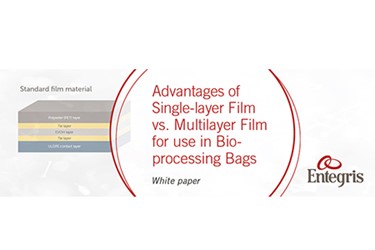Advantages Of Single-Layer Film Vs. Multilayer Film For Use In Bioprocessing

Medical treatment, as we know it, is changing fast. Gone are the days where blockbuster drugs are developed and prescribed as one-size-fits-all solutions. Today, the trend is toward precision medicine with targeted therapies. This single fact is significantly changing bioprocessing for pharmaceuticals.
Now more than ever, speed and flexibility are critical to succeed in the bioprocessing market. The first company to patent a process for a particular drug product reaps the most benefit. The use of polymeric bioprocessing components and systems provides the required speed to evaluate many more possibilities and get to the successful one quicker.
Plastics technology also enables small-batch, single-use packaging solutions for customized drugs to serve a smaller patient population. These solutions lower energy and water consumption while simultaneously improving facility utilization and creating a smaller carbon footprint, reducing the risk of contamination, as well as analytical and quality-control costs.
This paper takes a closer look at plastic storage bags for bioprocessing applications, the challenges associated with them, and technology developments to address these challenges. Specifically, it focuses on materials that enable a shift from multilayer to single-layer storage solutions.
Before we get into the details, let’s explore the journey that got us to this point.
Get unlimited access to:
Enter your credentials below to log in. Not yet a member of Bioprocess Online? Subscribe today.
